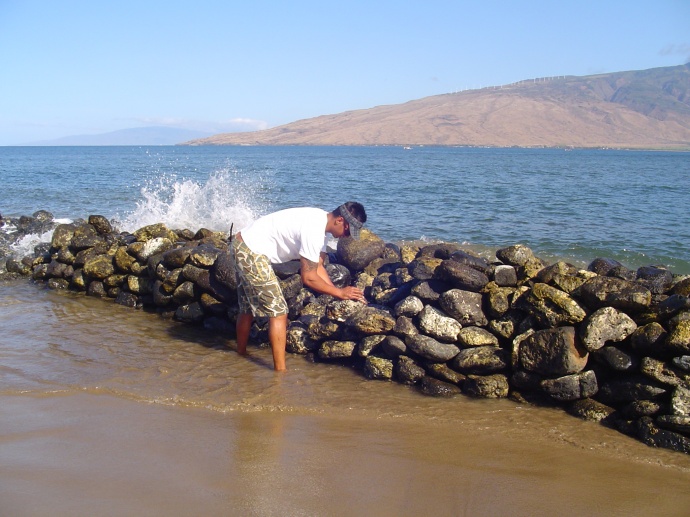Ko‘ie‘ie Fishpond
By Kimo Jenkins, Director, Product Development & Implementation Cultural Guide
it begins with the caring realization of need, is directed by inspired thought and vision, framed within the desire of making a positive impact. It is acceptance, love, and generosity – defining values of aloha – willingly practiced and unconditionally shared…
In our modern world, sustainability is a popular buzzword. For many ancient cultures, including the ancient Hawaiians, sustainability was simply a rule of existence, a life connection to and with the natural forces of their environment. Hawaiian cultural protocol dictates mālama o ke kai, mālama ka ‘āina, – care for the sea and the land, and they will in turn care for you.
Throughout Hawaiian history, fishponds or loko i‘a have served an important purpose. It was (is) theoretical aquaculture in practice, “ocean ranching” if you will, providing an enclosed in-shore eco-system to raise fish.
Ko‘ie‘ie (pronounced Koh-e-ay-e-ay) Fishpond is located on Maui’s southern shoreline, in North Kīhei. Archeologists believe this kuapa type loko i‘a was built more than 400 years ago and covers approximately 3 ocean acres. The wall is 1,173 feet long and of varying widths. The larger pōhaku – building rocks – range from 1-3 feet in diameter. Smaller fist-sized locking rocks – pōhaku pa‘a – are used to keep the big stones in place. Seawater freely flows through the wall, constantly replenishing the 2-5 foot deep pond with circulating ocean nutrients.
The restoration of Ko‘ie‘ie Loko I‘a is a mixture of physical labor, cultural connection, emotional attachment and spiritual awakening. The work is simultaneously fun and rewarding. Participants help dig up submerged pōhaku (rocks) and replace them on the fishpond’s wall. Cultural guides will be on hand assisting in the labor as well as sharing Hawaiian fishpond culture, Ko‘ie‘ie history, and the significance of the restoration project.
‘Ao‘ao O Na Loko I‘a O Maui, the organization founded to manage and facilitate the restoration explains it best: “…we strive to take people and return them back to the culture on which Hawai‘i thrives. We embrace everyone with open arms and present opportunities for them to reflect on what has brought them to this place and more importantly, how they will return their experience back to the earth. For it is only through utmost respect, discipline, understanding and unity that we will all be able to hold on to our culture and give back to it what we have learned.”

